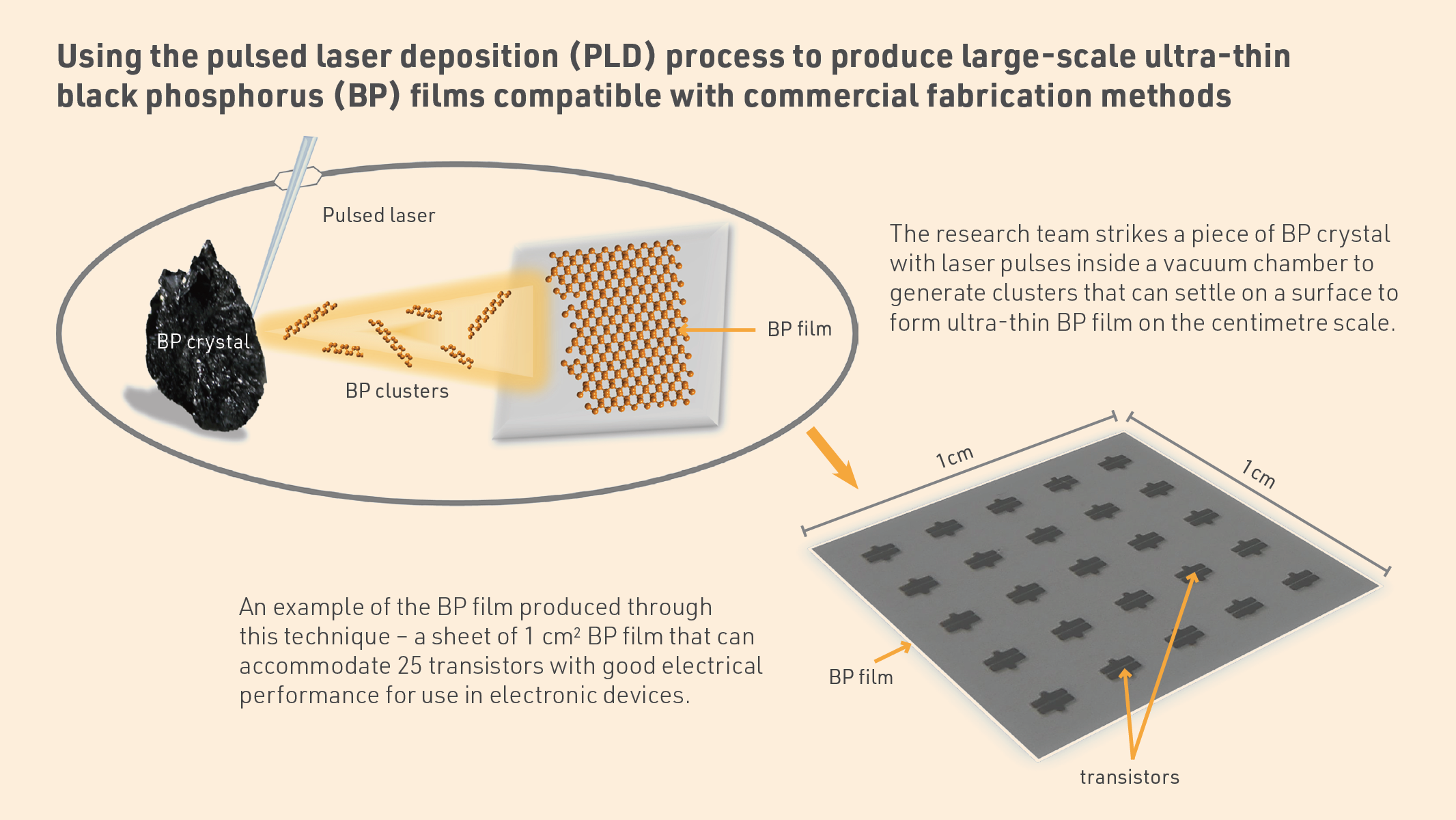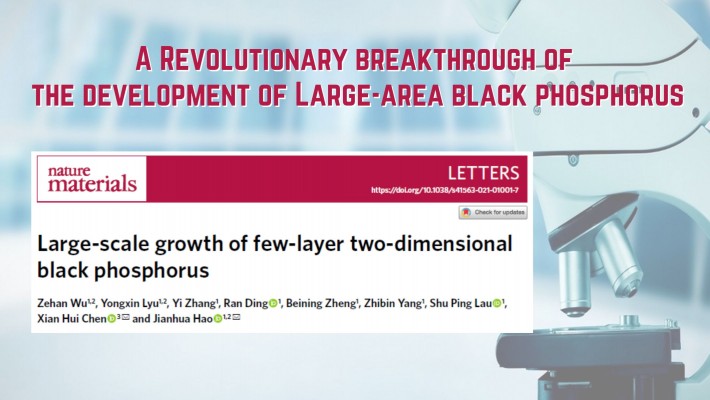PolyU’s research on black phosphorus paves the way for next generation intelligent electronic devices
Black phosphorus (BP) is an emerging two-dimensional material that can play an important role in improving the performance of information devices. BP is a layered semiconductor with controllable bandgap and high carrier mobility. It is ideal for applications ranging from nanoelectronics and nanophotonics to quantum devices and superconductors. However, its development and application prospects have been hindered by the inability to produce ultra-thin BP films on a large scale.
To overcome this long-standing obstacle, Professor Hao Jianhua, Associate Head of PolyU’s Department of Applied Physics, and his research team have developed a technique to synthesise ultra-thin BP on the centimetre scale through pulsed laser deposition (PLD). PLD is a method used to fabricate thin films through evaporating materials using laser pulses. The team experimented with the method for five years and succeeded in making highly uniform BP films with an area large enough to be compatible with commercial fabrication methods. The research findings can be found in the paper “Large-scale growth of few-layer two-dimensional black phosphorus”, recently published in the world-renowned science journal Nature Materials.
The breakthrough paves the way for further developing BP-based centimetre-scale devices with potential applications in the information industry.

“By using the PLD, we increased the size of the few-layer BP from dozens of micrometres to the centimetre scale,” Prof Hao explained. This opens up enormous application prospects for the material. For example, BP has the potential to replace silicon to make transistors of a much smaller size - with the thickness of just a few atoms. “The implication is that we can fit many more transistors, probably a thousand times of what existing technology allows, into intelligent electronic devices, like mobile phones and computers, to enable faster and more powerful functions.”






